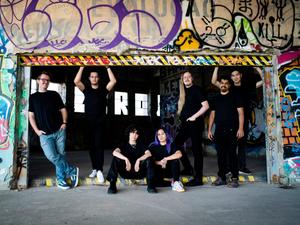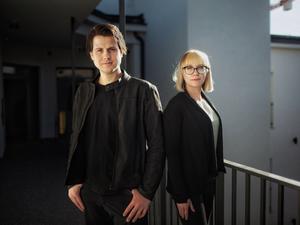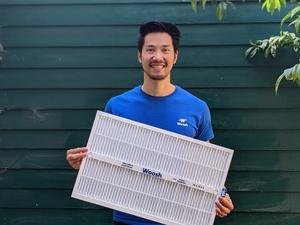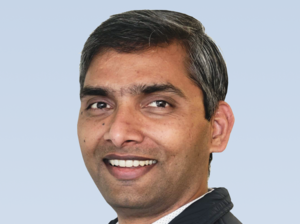
The effort to make solar cells more efficient has been only slightly easier than trying to milk blood from a stone.
While the average panel sold commercially these days does a significantly better job of converting sunlight into electricity than those of a few years ago, the best panels available to the public today aren't all that much more efficient than those that were on the market in the middle of the last decade.
The people behind Tandem PV Inc. think the Santa Clara startup can give the industry a significant boost. The company has developed a way of incorporating into the glass that covers solar cells a special material that can transform into electricity some of the light passing through — light at frequencies that traditional solar panels aren't as efficient at converting to energy.
"The entire idea is to make a more efficient solar cell, far beyond what you can buy on the market today," said Colin Bailie, Tandem's co-founder and CEO. "We plan to make solar cheaper for you so that you can justify it economically and break into those markets where there is no solar."
Run-of-the-mill solar panels these days offer about 18% to 19% efficiency, meaning they convert about 18 to 19% of the sunlight that hits them into electricity. Top-of-the line panels offer about 20% to 22% efficiency, or about the same as those made in 2015.
Bailie and the team at Tandem think their technology can get panel efficiency up to the 25% range.
Tandem uses two materials for its solar panels, Bailie said. The first is a basic silicon-based solar cell. The second is the glass cover, to which the company incorporates its special sauce — a metal-halide perovskite. Such materials are lead-based crystalline substances that have photovoltaic properties. They tend to be much better than traditional silicon solar cells at converting visible and ultraviolet light into electricity.
When sunlight passes through a Tandem panel, the perovskite layer converts the ultraviolet and much of the visible light frequencies into electricity, passing along the red and infrared light for the silicon solar cell to handle.
"By putting them in tandem together — simply by stacking them on top of each other — you can make far more efficient solar panels," Bailie said.
Efficiency is important with solar cells, because — at least in theory — it can make them less expensive. You can install fewer panels while generating the same amount of electricity. More efficient panels can also make it cost-effective to install solar panels in areas that get less sunlight.
Tandem has new funds to start testing production
Tandem is still in the development phase for its technology, so it hasn't shipped any of its solar panels yet. But it already has some notable backers. It raised about $5 million in the form of grants from the Department of Energy, the National Science Foundation, the California Energy Commission and other agencies.
On Wednesday, it announced it's raised $6 million in venture funding — about half of its planned Series A round. That brings to $9 million the total amount of equity funding it's secured. Among its venture investors are Insight Labs and Bioeconomy Capital.
By itself, silicon-based solar cell technology is becoming more efficient over time, but very slowly, said Rik Wehbring, managing director at Bioeconomy Capital. Despite that slow pace, other promising technologies have failed to displace silicon-based cells, he said. What's exciting about Tandem, is its system works with, rather than tries to replace, existing solar cells, he said. And Tandem's perovskite layer can improve the efficiency of silicon technology much sooner than it will reach on its own.
"Their technology turns every solar panel manufacturer into a customer," Wehbring said.
- Tandem PV Inc.
- Headquarters: San Jose
- CEO: Colin Bailie
- Year founded: 2016
- Number of employees: 14
- Website: tandempv.com
Bailie founded Tandem in 2016 with industry veteran Chris Eberspacher after getting his PhD in materials science from Stanford University. Eberspacher, who has worked for decades in the solar industry, had spent much of his career trying to help move thin-film solar cells — another cutting edge technology — from the laboratory into production.
Bailie met Eberspacher when the two of them enrolled in Cyclotron Road, an entrepreneurship program at Lawrence Berkeley National Laboratory that helps scientists start businesses. The founders came up with the name "tandem" for their company based on one of its common uses in English — to describe the popular two-seated bicycle where two or more users pedal at the same time.
Tandem plans to use its new funds to set up a pilot manufacturing line in San Jose, which is also where it plans to relocate its headquarters by the end of next month. Once it works out the manufacturing kinks, the startup plans to outsource its manufacturing, Bailie said. After it gets into full production, it intends to sell its panels to solar installers, who will in turn market them to consumers who are in the market for top-of-the-line or premium panels.
Bailie sees a big potential market for Tandem's panels. In the U.S. alone, installers sell about a gigawatt — one billion watts — worth of premium solar panels each year, Bailie said. With panels selling for around 80 cents to $1 for each watt they generate, that's a nearly $1 billion market already, with plenty of potential to grow.
"Once we hit economies of scale, we should be able to sell these tandems in any application, whether it's solar farms in Indonesia or rooftops in Germany," Bailie said. "We intend to expand to address the entire solar marketplace across the world."








